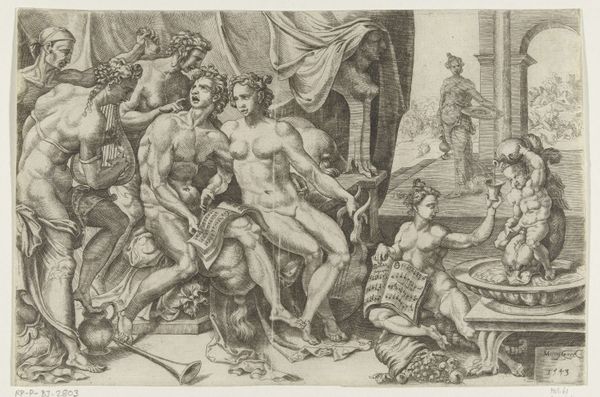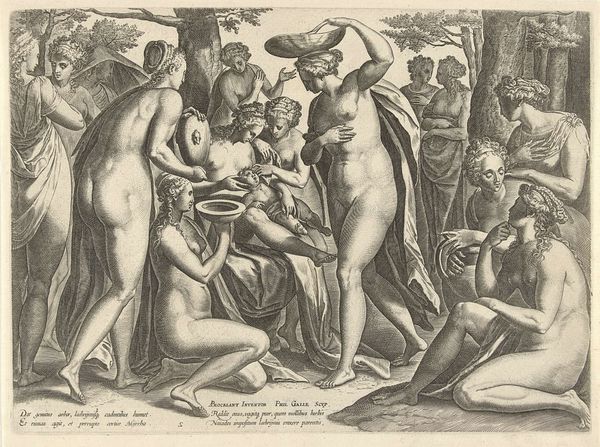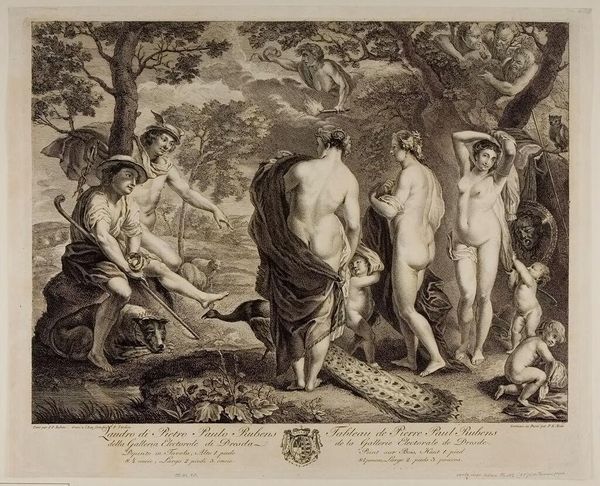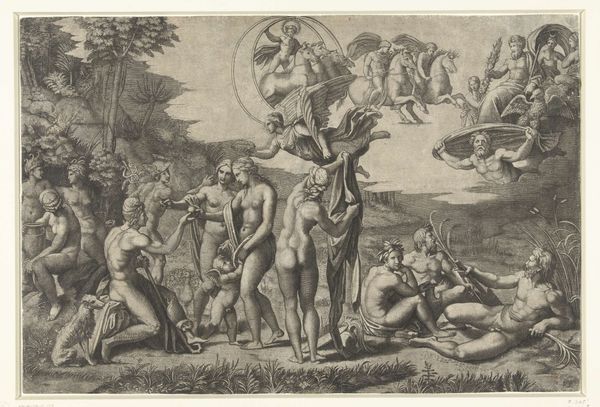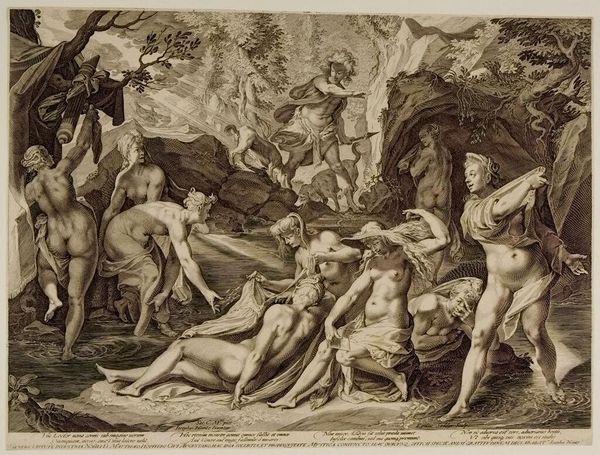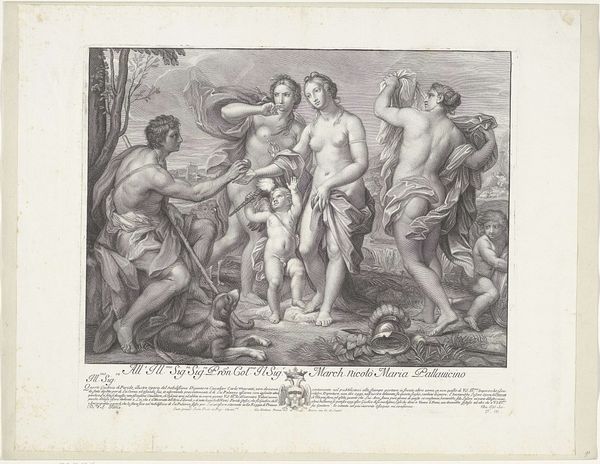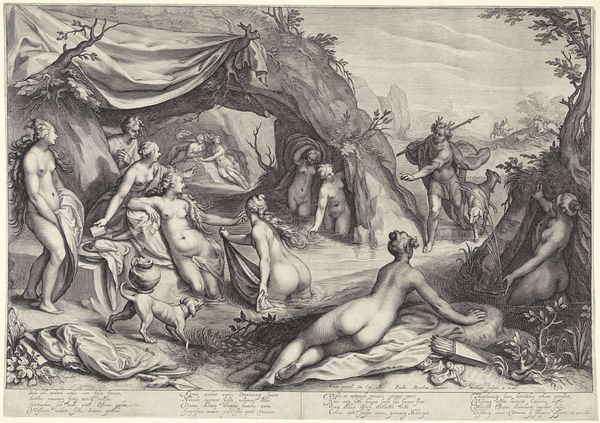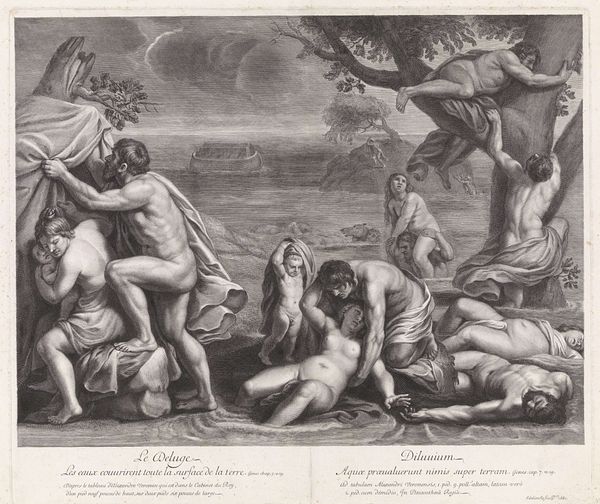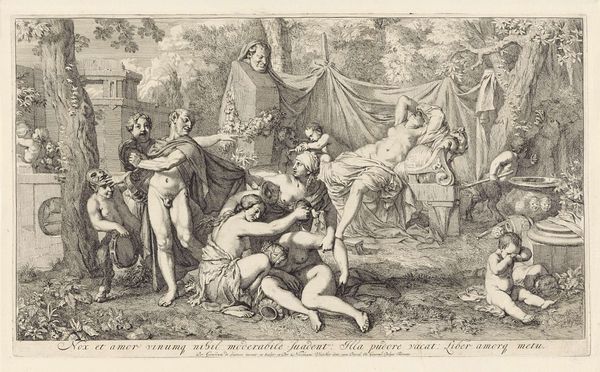
engraving
#
allegory
#
baroque
#
figuration
#
history-painting
#
nude
#
engraving
Dimensions: width 218 mm, height 141 mm
Copyright: Rijks Museum: Open Domain
Curator: Immediately, I notice the texture. It's like a whisper of lines forming a world, quite delicate, really. Editor: This is “Actaeon wordt vervloekt door de badende Diana,” or "Actaeon Cursed by the Bathing Diana," an engraving crafted between 1600 and 1620 by Justus Sadeler. You can find this baroque depiction currently housed in the Rijksmuseum. It illustrates the myth of Actaeon, a hunter who stumbled upon Diana, the goddess of the hunt, bathing with her nymphs. Curator: Poor chap. Always a bad idea to walk in on someone when they're feeling vulnerable, especially when they're divine. Visually, the figures are so close together, a mass of bodies almost interwoven with the landscape, yet so separate in their expressions. There is a distinct lack of connection, and thus, harmony. Editor: Exactly. Actaeon's transgression wasn't simply about seeing Diana naked; it was a violation of boundaries, of power dynamics. His male gaze, imposed upon the female nude in a moment of private ritual, sparked a brutal consequence. The punishment for this intrusion was becoming prey. He was turned into a stag and hunted down by his own hounds, as this tale often goes. Curator: Ah, there is where your modern analysis, intersectional narrative of power, gender, and justice helps me appreciate a new way of observing it. From a purely artistic standpoint, I was just caught up in the technique – all those tiny, controlled lines creating such a chaotic scene! How each figure, while sharing the same space, occupies its little pocket of emotional reaction. There is even what seems to be indifference, even as one figure shields another's face as though covering their eyes to prevent them from having also seen something improper. Editor: Yes, and consider how Sadeler used this mythological scene to mirror broader societal structures and gender relations, creating something layered that provokes our deeper considerations. The art is both a reflection of power imbalances and an implicit social commentary about moral transgression and ultimate punishment. Curator: I must admit, this has really turned my reading around. I started by enjoying it but appreciating the technical artistry of it, but now, I will probably view it with considerations about boundaries, gaze, and power, whenever I pass by this engraving once more. Editor: And for me, viewing it through your perspective—I now better understand the brilliance required for translating the full extent of such grand thematic notions to something so refined and distilled as a collection of simple engravings.
Comments
No comments
Be the first to comment and join the conversation on the ultimate creative platform.

